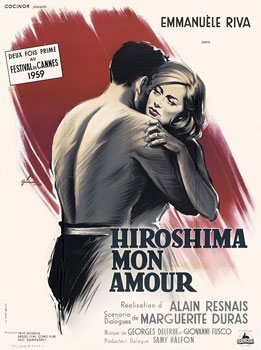
Duras was so troubled, so speechless with disgust about her youth, that it took her several efforts to put it on paper. Early in Marguerite Duras’s The Lover, we encounter an indelible image: a strange rag doll of a girl rides the ferry across the Mekong River en route to Saigon.
#THE LOVER DURAS SETTING MOVIE#
This version became a successful movie in 1992, despite a conflict between Duras and its makers: shortly before its première, she published “The North China Lover”, another version. She wrote about love and death and their opposites. Set in 1920s Indochina, a young French girl becomes romantically and sexually involved with a Chinese. Marguérite Duras (1914-96) was a novelist, scriptwriter, playwright and film director. Duras put the reader through the intricacies of the sexual relationship. Her aim? Who knows? Fleeing from that mad mother and awful brother, the heat, the hopeless poverty to some quiet, secure place to write about her ordeal, then, maybe about new adventures? The Lover is a semi-autobiographical work based in a 1920s setting and tells. At school, it isolates her more than ever before. She has willfully done something the ruling whites in the colony disapprove of. She does not love him, but has vague hopes their affair will open a window of opportunity. He is obsessed by her, but his father long ago arranged his marriage. The white and skinny 15½-year old, weirdly-dressed girl and the Chinese man begin an affair. On a ferry across the Mekong river, the then teenage narrator is invited by a 27-years old Chinese millionaire, to be driven to her boarding school in his large, black, chauffeur-driven car. Because of her firstborn, who steals even from the servants. Because of mother’s terrible investments. Both the elder brother and mother beat up the younger siblings in a context of deepening poverty. Her dissolute, useless elder son is her favorite and terrorizes her younger son and daughter. Set in the prewar Indochina of Marguerite Durass childhood, this is the haunting tale of a tumultuous affair between an adolescent French girl and her Chinese. Father, a colonial official died when she was a toddler and she grew up in a family from hell, headed by a mother who does everything wrong.

This dramatic, intense memories of an aging Frenchwoman, with emphasis on her teens, unfolds during the 1920s and -30s in the French colony of Indo-China (today’s Laos, Vietnam and Cambodia). Tours are offered by the Dong Thap Tourist Company who also manage the property.Geschreven bij The Lover (Harper Perennial Modern Classics) Duras, Mr Le and his families, both immediate and extended, and other memorabilia including that of the film in which, I believe, the house was used as a set. Arranged Marriage: The Chinaman has a long-arranged marriage to a girl from another wealthy Chinese family. The film and novel contain the following tropes. Our private tour started with tea and dried, sugared ginger slices served in the house's ornate interior which features many photos of Ms. The Lover is the best known of these set in pre-war Indochina, its haunting tale of a tumultuous affair between an adolescent French girl and her wealthy. The Lover (or LAmant) is a 1992 French film based on the novel of the same name by Marguerite Duras.Set in French Indo-China in 1929, it depicts the illicit affair between a fifteen-year old French girl and her wealthy Chinese lover. More and more visitors, Asian and increasingly Western, visit this site in a tour called, "Following the footsteps of 'The Lover'", which includesTrung Vuong Sa Dec Primary School - where Duras' mother taught school from 1924 to 1930 - and the Ong Quach Pagoda. Duras died in Paris in 1996 after a long literary career. An accomplished writer, "The Lover" was one of Duras' later works published twelve years after Le's death. Le and his family used the house until 1972 when Le died and his family moved abroad.

Le maintained his love for the girl and learns much later that the girl loved him deeply as well. Le marries another, more "suitable" woman and has a family. Le succumbs to his father's pressure and ends the relationship and the girl moves to France at 18. However, Le's father disapproved of the relationship due to their social class differences. Basically, the story is of a 15 yr old Vietnamese girl who has an lingering tryst with a 27 yr old Huynh Thuy Le, son of a Chinese business magnate in 1929. Prior to her public acclaim in 1985, however, Duras had become known to a wider public for her script for Alain Resnais’s film, Hiroshima mon amour (1959), for her own film, India Song (1974) based on her novel Le Vice-consul (1966), and for two much-discussed novels.

The "Lover's House" has a unique blend of French and Chinese architecture. In 1984, Duras received the prix Goncourt for her novel, The Lover.

Built in 1885 by Le's father, this house is a key setting for Marguerite Duras' acclaimed autobiograhpical novel, "L'amant" ("The Lover") which was later made into a film of the same name.


 0 kommentar(er)
0 kommentar(er)
